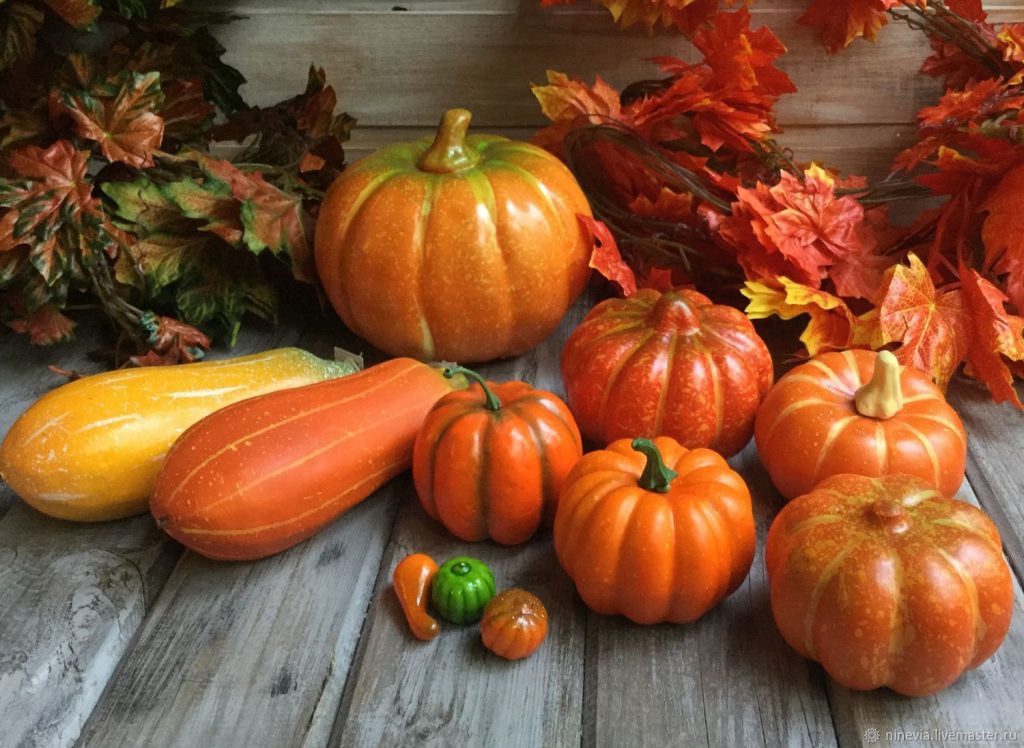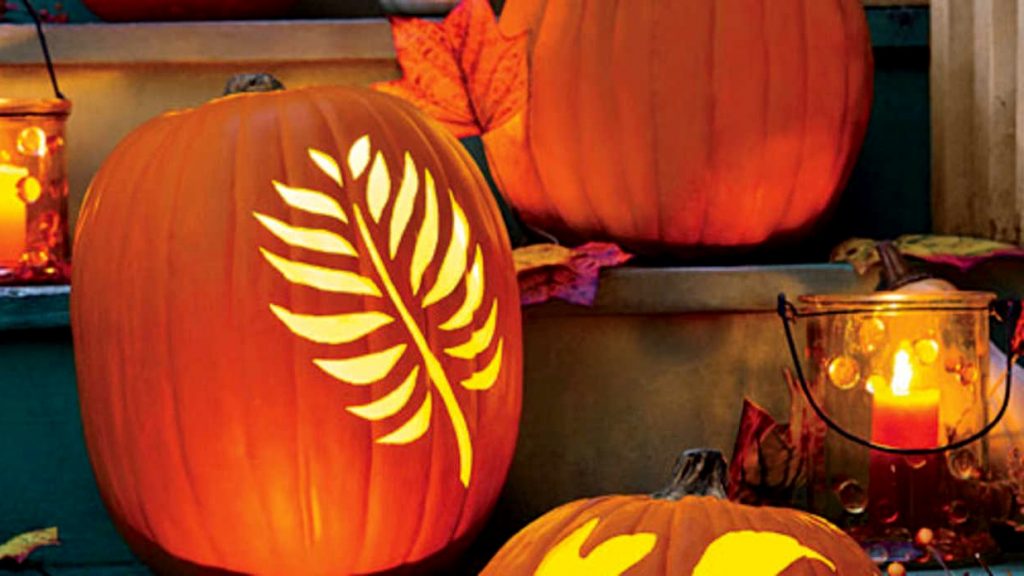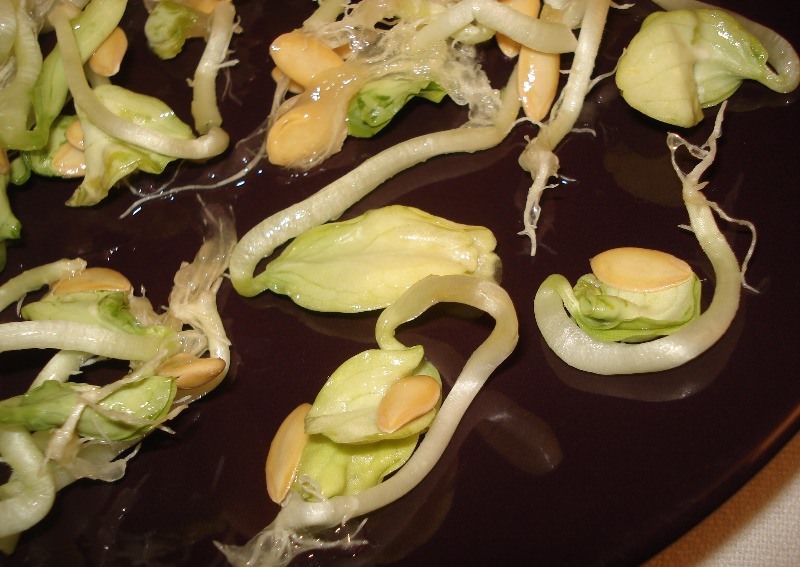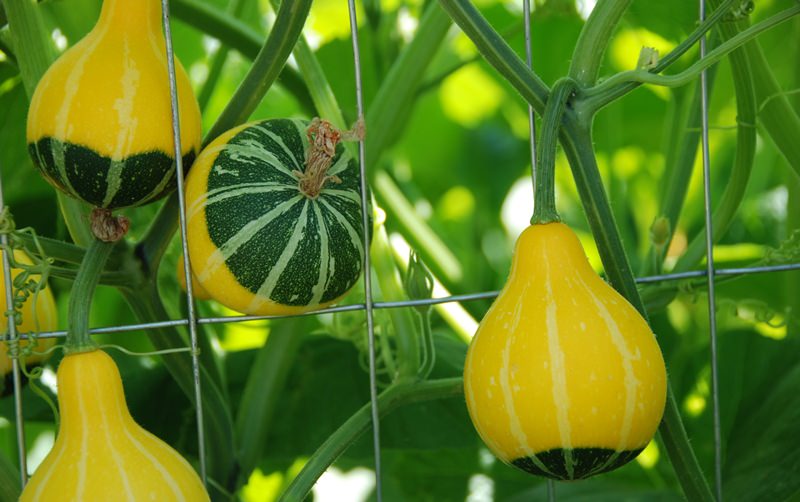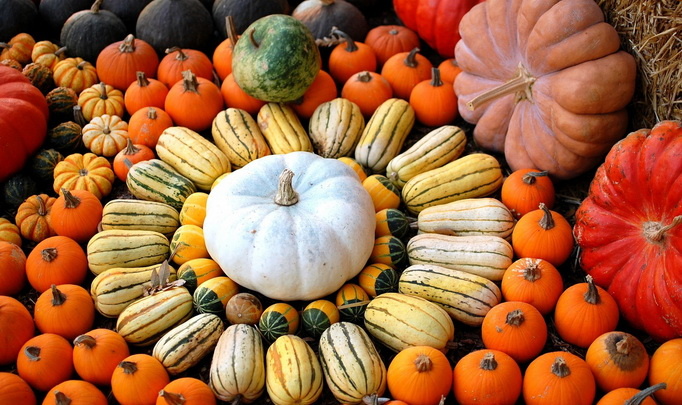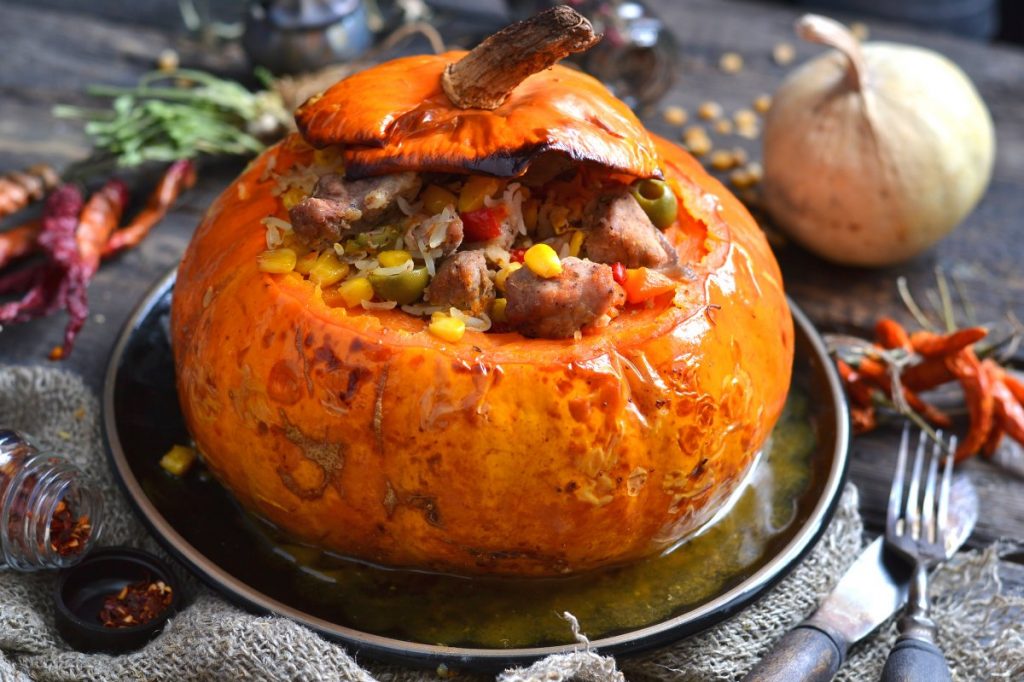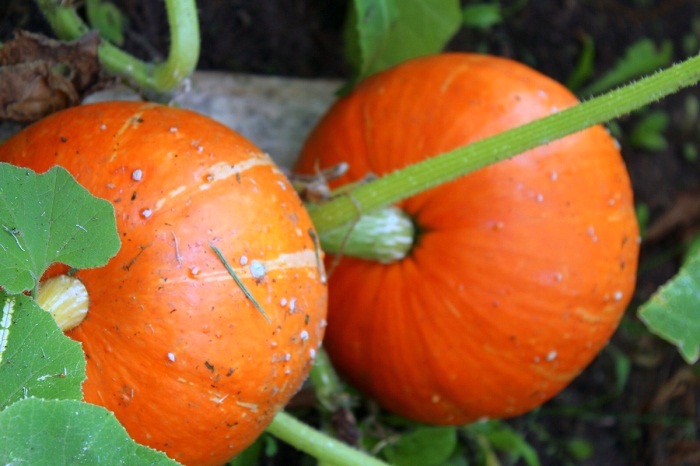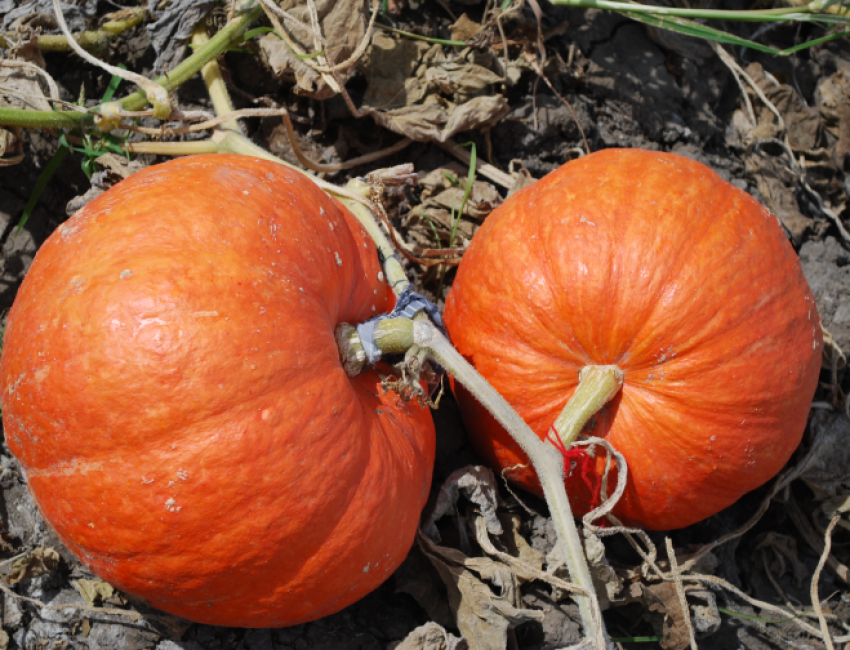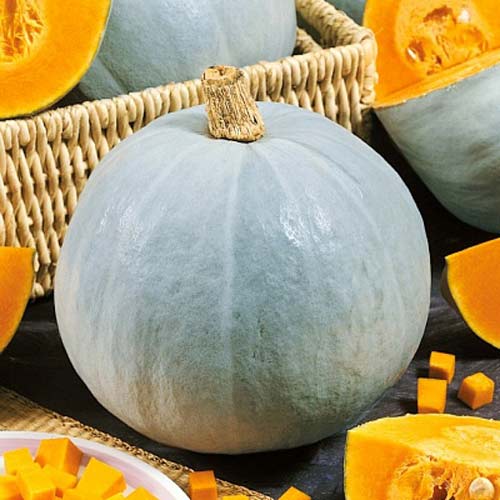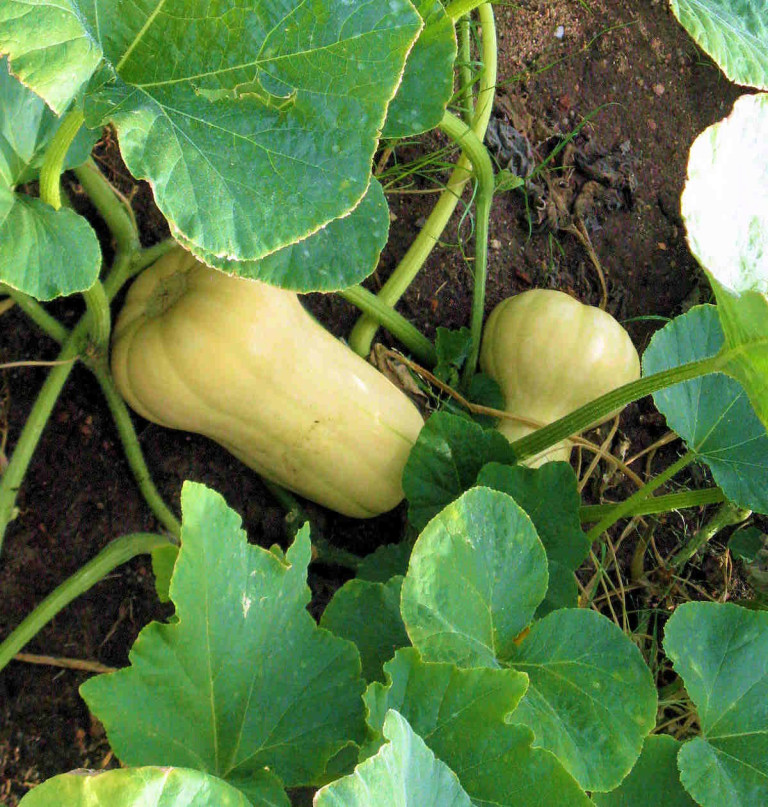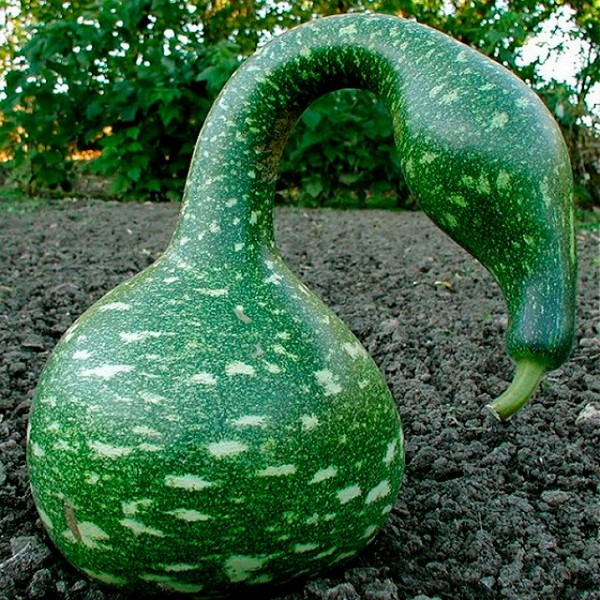Content:
A decorative pumpkin on special supports forms beautiful screens that consist not only of beautiful leaves, but also colorful fruits that can be eaten or used for making crafts.
Description and application
The culture can be roughly divided into 2 subspecies:
- bush;
- climbing pumpkin.
They differ in the nature of the development of lateral shoots. For decoration and original design of the site, it is preferable to use a bush pumpkin. A curly pumpkin is suitable for decorating balconies, gazebos and arbours.
Different types of decorative pumpkin have fruits of various shapes and sizes: in the form of a star, a mushroom or a pear.
Ornamental pumpkin is planted not only for landscaping. The fruits are also used for other purposes:
- you can make original and unique handicrafts and souvenirs from them. This is facilitated by the bizarre shapes of the fruits and the variety of their colors.
- Many ornamental varieties have excellent pulp taste. It can be used to make porridge, bake a pie or boil pumpkin jam.
Depending on how the decorative pumpkin is supposed to be used, it is worth choosing its type.
Planting and caring for a decorative curly pumpkin
The cultivation conditions for ornamental pumpkin are no different from the cultivation of the usual one. It can be planted both by sowing seed material directly into the soil, and through seedlings.
To grow seedlings, you must first prepare the soil. For this, sand, humus and wood ash are mixed in equal parts. The soil must be decomposed into containers with a volume of at least 500 ml.
Before planting seeds, they need to be disinfected and germinated. For disinfection, pumpkin seeds are placed in a warm solution of potassium permanganate of medium strength for 30 - 40 minutes.
After that, the seeds should be wrapped in damp gauze or cloth and left for 2 - 3 days. In this way, seeds will germinate. This will speed up the process of emergence of the first shoots.
After this time, you can start planting germinated seeds in a container with soil. In this case, the seeds must be placed in the soil in such a way that the sprout is on top.
After planting, further care for the decorative curly pumpkin consists in timely watering, feeding and maintaining the required temperature.
The containers in which the seeds are sown must be in well-lit places, otherwise the seedlings will grow thin and strongly elongate. It will be difficult to get a healthy and beautiful plant out of them.
Decorative pumpkins are very fond of water. This means that in no case should the soil dry out in the container. If the air temperature in the room fluctuates between 23 - 25 degrees, the seedlings must be watered every other day.
Approximately 14 - 16 days after sowing the seeds in the ground, the seedlings must be hardened. For this, containers are taken out into the street (at a temperature of 15 - 22 degrees).At first, the time spent on the street seedlings should not be more than 5 - 10 minutes. Every day this period increases and reaches 2, 5 - 3 hours daily.
Ornamental pumpkin grows very well on loose and fertile soils. It is desirable that the acidity of the soil is close to 0.
For good development and active growth of seedlings, it needs to be watered every day. At the same time, try to do so that water does not fall on the leaves. This can lead to their yellowing, which will spoil the appearance of the decorative pumpkin.
In mid-May, you can start planting seedlings in open ground. To do this, it is better to choose a well-lit area where there are no drafts. You need to plant directly with the container, without removing the plant. The distance between plants should be at least 1 - 1, 5 m. This is necessary so that the plants do not shade each other and do not interfere with the development of the green part of the pumpkin.
To slow down the evaporation of moisture from the soil under the plants and in the aisles, experienced gardeners recommend mulching the soil.
To give the plants an attractive appearance, it is necessary to properly shape the bush. Beautiful and ripe fruits will appear on the plant if, after the appearance of 4 leaves, pinch the top. In addition, only 1 ovary should be left at the place of fruit formation, and the rest should be removed.
To prevent rotting of the fruit and the green part, the bushes must be tied up. For this you can use wooden supports, strong rope or metal supports.
In no case should you forget about feeding pumpkin. To do this, you can use a mullein solution (1 part of cow droppings is dissolved in 10 liters of water) or a solution prepared from chicken droppings (dissolve 1 part of bird droppings in 20 liters of water).
As a mineral supplement, you can use a solution prepared from ammonia nitrate, sodium sulfate and superphosphate.
If all the conditions for the cultivation of decorative pumpkin are met, you can get beautiful plants and a good harvest.
Ornamental pumpkin varieties
The breeders presented the gardeners with a wide variety of varieties of ornamental pumpkin. Each of them has features of appearance and cultivation. Among the most popular varieties are the following:
- Crown. The fruits of this variety have the appearance of a bright green, yellow or orange star. It is better to plant the plant at the end of April. Pumpkins begin to ripen in unison by the end of July. Plants are used to decorate the exterior walls of rooms or gazebos.
- Turkish turban pumpkin. The plant has beautiful large leaves with a faceted border. Pumpkin flowers look like a yellow bell. The fruit is turban shaped, hence the name of the variety. On one bush, up to 25 - 30 pumpkins can form. The length of the stems reaches 5 - 6, 5 m. Plants have shown themselves well even in drought conditions. The variety is used to decorate arbors or gazebos, the formation of a green hedge.
- Baby pumpkin. The variety is edible and early ripening. Its pulp tastes good. Each plant produces 5-10 small pear-shaped fruits. They have a hard skin. This variety is extremely popular for home cultivation.
- Pumpkin Fungus. A distinctive feature of this variety is that its fruits consist of 2 parts, which in appearance resemble a mushroom. It is a large-fruited pumpkin that grows very quickly. Used to complement the garden design. Since the fruit has a hard peel, after ripening, the pulp is cleaned from it, dried and used for making souvenirs or various home crafts.
- Orange. The fruits of this variety are light (up to 300 g) in weight and bright orange in color. They are used to make jewelry and souvenirs, and also serve as a great addition to the green hedge in the country.
The variety of varieties allows everyone to choose the variety to their liking.
Is it possible to eat a decorative pumpkin
Most varieties of climbing pumpkin can hardly be called edible. This is due to the fact that they have a fairly hard peel and not very juicy tough pulp.
But there are still varieties, the pulp of which is suitable for human consumption. Among the most famous are the following edible varieties of decorative pumpkin:
- Smile. Small orange fruits ripen on plants. They can be used not only for making casseroles and cereals, but also for stuffing.
- Turkish turban. This pumpkin variety has a firm flesh. This makes it possible to prepare delicious candied fruits from it. They are not only quite easy to prepare, but also contain a whole range of vitamins.
- Warty. Fruits of this variety are recommended to be eaten when they are not yet fully ripe. Then their pulp is juicy and tasty, and the peel has not yet had time to harden. Pumpkins are used to make casseroles, cereals and healthy soups.
Decorative pumpkins can be used not only as a decoration for a garden plot, but also as a material from which you can make unique souvenirs of their kind. In addition, healthy and tasty dishes can be prepared from decorative pumpkins. Their bright colors and whimsical shape will make pumpkin dishes a decoration of any table.
